Research
Powdery Mildew of Cucurbits Caused by Podosphaera xanthii
Since 1989, research activities have focused on powdery mildew responding to the continual need to evaluate new and old management tools for this highly adaptable pathogen that causes the most important disease of this important crop group. Halloween pumpkins are a very valuable crop on LI where squash, melons and cucumbers are also widely grown. Powdery mildew occurs commonly every year because P. xanthii produces an abundance of spores that are easily dispersed long distances by wind. P. xanthii has proven able to develop resistance to single-site, mobile fungicides faster than new products can be registered. Sensitivity of the pathogen to currently-registered and new fungicides is being examined in production fields using a seedling bioassay and in the laboratory using a leaf-disk assay. Efficacy of these fungicides as well as biopesticides is also being determined. Resistant cultivars are the only other management tool for powdery mildew. Recent evaluations of many of the resistant cultivars of pumpkin, squash and muskmelon now available revealed that degree of disease suppression can vary greatly among cultivars. In 2007, the impact of pathogen evolution to overcome genetic resistance was documented.
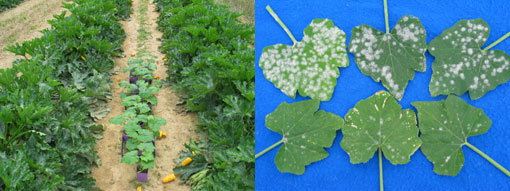
Seedling fungicide sensitivity bioassay
Phytophthora Blight Caused by Phytophthora capsici
Extensive losses have occurred because of Phytophthora blight especially in cucurbits and pepper, thus it is the most important disease for many growers. An integrated management program has been developed based on research results and observations from commercial fields. Management tools that have been evaluated since 1992 include fungicides, biopesticides, resistant cultivars, hard-rinded pumpkins, compost amendments, soil solarization, and practices like clover-planted field driveways and subsoiling for managing compaction and soil moisture.
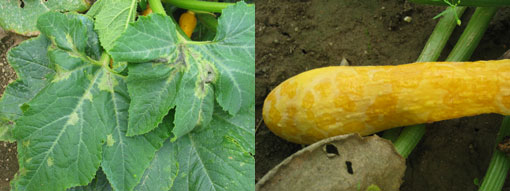
Phytophthora blight of summer squash
Downy Mildew of Cucurbits Caused by Pseudoperonospora cubensis
Following appearance of a new pathogen strain, importance of downy mildew has greatly increased in the northeastern US. Experiments have been conducted since 2006 to evaluate new fungicides, determine occurrence and impact of fungicide resistance, and monitor presence of the various pathotypes.
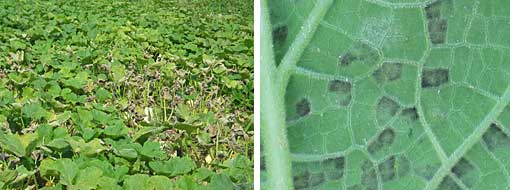
Downy mildew in butternut squash and on lower surface of pumpkin leaf.
Septoria Leaf Spot, Powdery Mildew, Bacterial Speck and Other Foliar Diseases in Tomato
Experiments are being conducted on the common diseases affecting tomatoes grown on LI under organic and conventional production systems. Most research has been conducted with tomatoes grown no-till in a rye-vetch mulch in the Organic Research Field at LIHREC. Treatments evaluated recently for combinations of diseases occurring naturally include compost tea, OMRI-listed products, and new products being developed for organic production, as well as vetch mulch.

Powdery mildew and Septoria leaf spot of tomato
Ambient Ozone Impact on Plant Productivity
Assessing the impact of exposure to an air pollutant as it naturally occurs is challenging because of the difficulty of protecting plants from exposure in a manner that does not also affect plant growth in order to have plants not impacted by the pollutant to compare to the exposed plants. Another approach is to compare plants that are similar except for their sensitivity to the pollutant. This approach is being used on LI using ozone-sensitive and ozone-tolerant snap bean lines and white clover clones that were developed for this type of investigation.
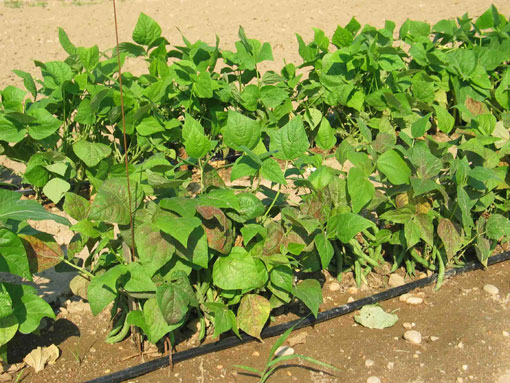
Ozone injury on sensitive line in foreground but not tolerant line behind.
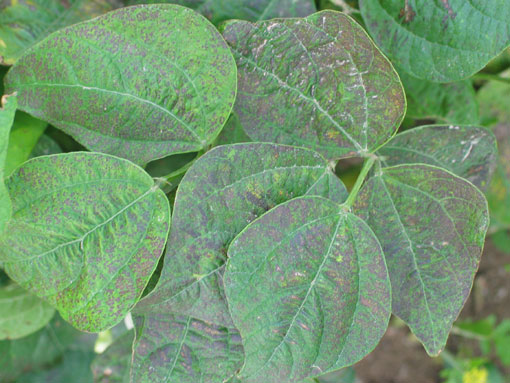
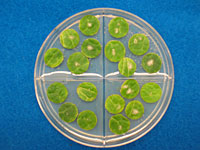
Leaf disk fungicide sensitivity bioassay
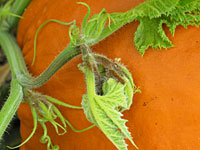
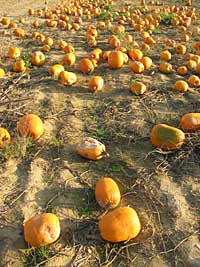
Phytophthora blight of pumpkin
